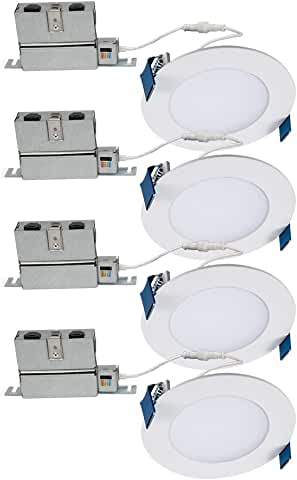magentawave
Well-known member
- Joined
- Jul 7, 2012
- Messages
- 278
- Reaction score
- 47
I prefer simple so instead of running wires to ceiling puck lights in my next van build, I am thinking of using AA battery powered LED puck lights. I have been using 8 of them in my full time live aboard Sienna for almost two years now and they are all still working great.
UPSIDE:
-No wires means super simple, fast and perfectly targeted installation.
-Comes with dimmer on remote (which I have never used).
-Adheres to surface with included super sticky taped back (almost 2 years and not one has fallen off).
-Inexpensive and easily replaced.
DOWNSIDE:
-Non rechargeable AA batteries don’t last long and end up in landfills. (Not cool, but cool if I use EBL 2800maH Ni-MH rechargeable batteries that last a few thousand cycles.)
-Instead of flush or close to flush of ceiling, they are 1 3/8” thick so will encroach a bit. (If that’s an issue then I could probably install them close to flush though.)
What do you think? Am I missing anything here?
UPSIDE:
-No wires means super simple, fast and perfectly targeted installation.
-Comes with dimmer on remote (which I have never used).
-Adheres to surface with included super sticky taped back (almost 2 years and not one has fallen off).
-Inexpensive and easily replaced.
DOWNSIDE:
-Non rechargeable AA batteries don’t last long and end up in landfills. (Not cool, but cool if I use EBL 2800maH Ni-MH rechargeable batteries that last a few thousand cycles.)
-Instead of flush or close to flush of ceiling, they are 1 3/8” thick so will encroach a bit. (If that’s an issue then I could probably install them close to flush though.)
What do you think? Am I missing anything here?
Last edited:


























